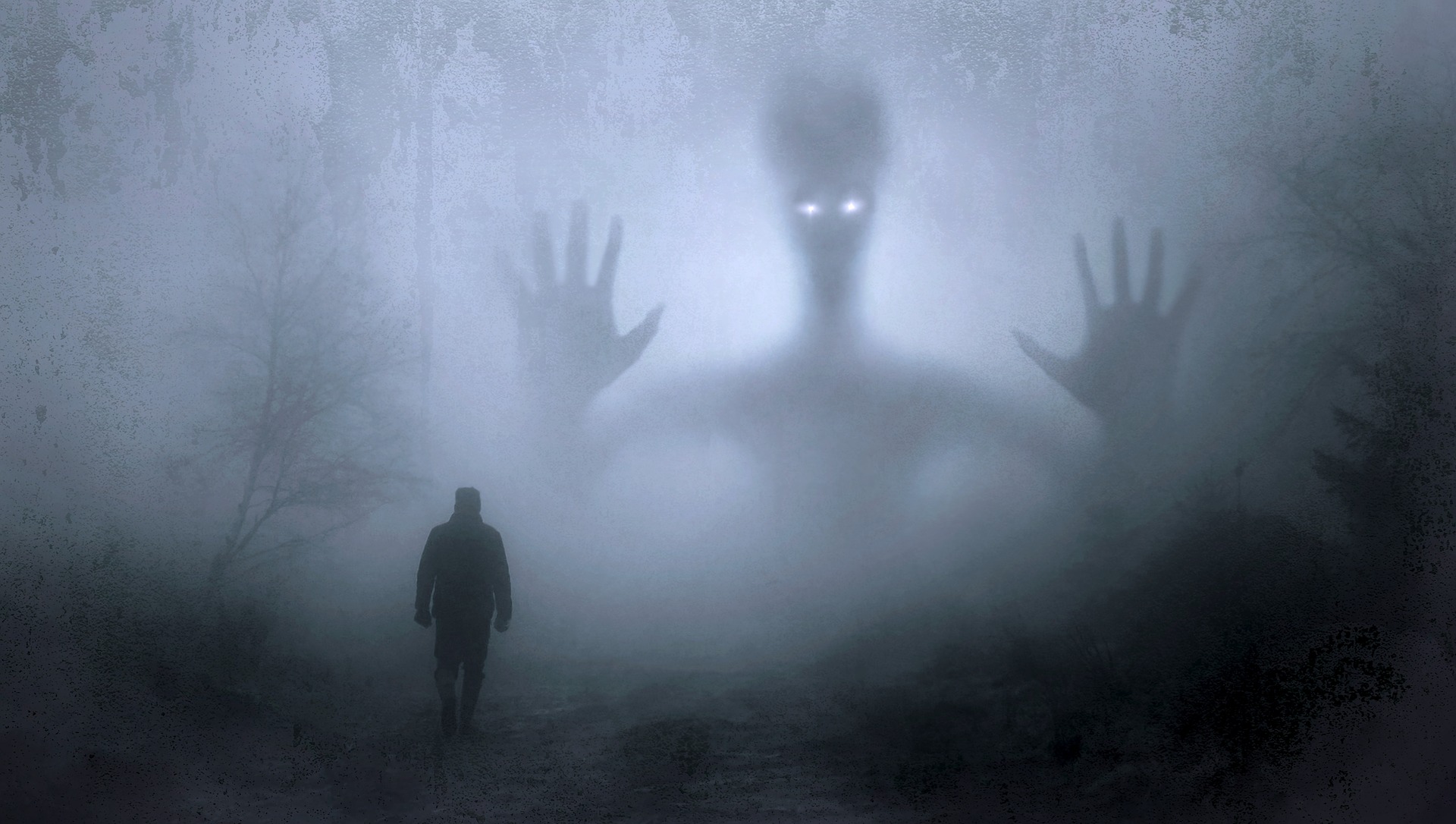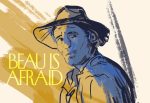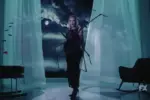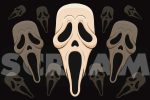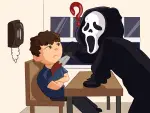In its ninth season, “American Horror Story” brings together the ’80s most disreputable pop culture touchstones: slasher films, serial killers and Satanism. “American Horror Story: 1984” uses these elements in service of helping the slasher film make the transition to television’s relatively vast runtimes.
Rather than using the tropes and iconography of the slasher to take potshots at their insufficiencies, “American Horror Story: 1984” uses each element to realize the creators’ version of the ultimate slasher.
“American Horror Story” often feels like a collection of horror what-ifs, a mashup of seemingly disparate genre-specific components. As potentially interesting as this kind of mashup sounds, the references sometimes felt incongruous in the grand scheme of other seasons’ larger narratives; however, “American Horror Story: 1984” avoids this by making slasher tropes and archetypes feel rooted in something genuinely human. Finding the humanity in something as slapdash as the tired plots of a thousand slasher films isn’t an easy feat.
The current season focuses on the reopening of Camp Redwood, the site of a 1970 camper massacre. Ignoring any chance of danger, a group of friends leap at the chance to work an easy camp counselor gig. Their carefree bliss is shattered when Mr. Jingles, the perpetrator of the aforementioned massacre, escapes from the nearby asylum.
So, what even is a slasher film? In J. A. Kerswell’s “The Teenage Slasher Movie Book,” he defines the slasher as, “A blend of horror and thriller conventions, it is a ‘cat-and-mouse’ movie, usually involving a number of teenage victims, at its most basic.” The villains of slasher movies wield everyday items as weapons and dispatch their victims in quick, yet viscerally gruesome ways. Slasher villains are also typically mysterious characters with motives based in past traumas.
https://twitter.com/MrNopetm/status/1186829597330984960
My viewing of the current season has been bolstered by a knowledge of the ins-and-outs of the slasher genre. Let’s be honest though, you don’t want to sift through hours of unremarkable cash-grabs.
Luckily for you, you can gather a better understanding of what the creators are trying to do with “American Horror Story: 1984” with this quick list. Also, if it’s not immediately apparent that the basic plot outline above is reminiscent of both “Friday the 13th” and “Halloween,” you should probably check them out too.
1. Blood Rage (1987)
“Blood Rage” is among the grimmest slasher films ever. The story begins with a homicidal twin pinning his first murder on his brother. Many years later, the innocent brother escapes from his permanent residence at the nearby asylum, and the evil brother uses news of his escape to commit a new series of murders.
Although slasher films are known for having killers with long-held grudges, few in the genre give the trauma a palpable weight. The return of the innocent brother calls a long-accepted truth into question. Like “American Horror Story: 1984,” “Blood Rage” makes the banal evils feel infinitely scarier than the mythic ones.
2. Eaten Alive (1976)
Prior “American Horror Story” seasons have a keen interest in true crime topics, especially serial killers. The introduction of real serial killers into fiction continues with the addition of The Night Stalker, Richard Ramirez, to the reoccurring cast of characters. More so than any season before, “American Horror Story: 1984” expands upon the killer’s biographical details to strengthen the show’s narrative ambitions.
“Eaten Alive” is a feverish film about a serial killer who feeds his victims to the alligators living under his house. Based on the murders committed by John Ball in the 1930s, “Eaten Alive” is among the most deeply surreal and uncomfortable films. Director Tobe Hooper distinguishes “Eaten Alive” from his previous serial killer film, “The Texas Chain Saw Massacre,” by demystifying the killer and eschewing any sense of verisimilitude.
https://twitter.com/Dr_Giallo/status/1189124717783015424
The film brandishes its artifice aggressively. The garish lighting, piercing soundtrack drones and claustrophobic sets want to make you feel as sweaty and jittery as the film’s actors. The killer is only threatening in the sense that he feels like a product of the vulgar world portrayed in the film.
If “The Texas Chain Saw Massacre” made the viewer privy to a world where outsiders could easily become dinner, “Eaten Alive” makes it clear that we are all part of the same world, a world built upon senseless ugliness and cruelty.
3. Death Spa (1989)
The majority of the cast of “American Horror Story: 1984” know each other from their time at a shared gym. The dutiful recreation of an 80s gym lobby immediately reminded me of “Death Spa,” a supernatural slasher. Along with being a first-rate film, “Death Spa” provides incredible insight into the fashion and interior design trends “American Horror Story: 1984” indulges in. This doesn’t imply an ironic distance; the big hair and unfortunate ‘staches are lovingly recreated.
Taking away the biggest part of a slasher, the killer, might seem like a loose application of the term, but the structure is undeniably rooted in the slasher formula. The film’s characters are being dispatched by a possessed computer tampering with the gym equipment. Although the plot sounds potentially silly, “Death Spa” rises far above hundreds of mediocre slashers by having frequently striking imagery and an admirable level of commitment in completely serving its conceit.
4. The Burning (1981)
“American Horror Story: 1984” uses a campground as its main location, and this choice is based on the prevalence of camp-based slasher films. The similarities between Cropsy, the slasher in “The Burning,” and Mr. Jingles, the legendary killer of “American Horror Story: 1984,” made this film rise above other similar films, like “Friday the 13th” and “Sleepaway Camp.”
The idea for Cropsy originated from Staten Island’s Cropsey legend. An article on Cropsey characterizes the mythic predator as a “an escaped mental patient with a hook for a hand who hunted children.” Using the legend as more of a starting point, the film avoids mischaracterizing or trivializing the horrific realities surrounding the actual Cropsey.
The killer in “The Burning” is the bitter victim of an ostensibly deadly prank, a janitor driven mad by senseless cruelty. Despite opening on an eerie stalk-and-slash sequence and Cropsy’s origins, “The Burning” spends a good bit of its run time establishing the jovially crude spirit of life at a summer camp.
Punctuating innocuous fun with unexpected bursts of violence is pretty much the calling card of your typical slasher. “The Burning” succeeds by having the goofy and the gory feel equally essential to the film’s aims.
This is the scariest of scary stories. https://t.co/ydpELCvC6n
— Curiosity (@curiositydotcom) October 26, 2019
5. Sledgehammer (1983)
The title sequence for “American Horror Story: 1984” utilizes the imagery and aesthetic of ’80s-shot-on-video horror films. Shot-on-video horror, typically shortened to SOV, came about with the accessibility of consumer camcorders and the rental of broadcasting equipment. To put it simply, SOV films are just films recorded on video rather than film stock.
In “Analog Nightmares: The Shot on Video Horror Films of 1982-1995,” author Richard Mogg describes how the SOV horror movement was an offshoot of independent film making and distribution: “They were made and sold typically without regulation or MPAA classifications. Most were crafted by untrained artists eager to spill blood onscreen.” The films didn’t have the weight of multimillion dollar budgets or producer concerns, which meant there could be all kinds of new approaches to creating cinematic horror.
The openings are infamous for their shocking imagery, and the eerie, homespun quality of SOV horror fits the “American Horror Story” lineage well. Seeing horror imagery expressed through lo-fi video footage lends the images an unnerving sense of intimacy and truth.
“Sledgehammer,” the first SOV slasher, realizes the medium’s effectiveness in bringing a new feeling of dread to the familiar. The film juxtaposes the pacing of a home movie with bursts of supernatural terror; seemingly off the cuff hangout scenes are intercut with grainy footage of a cheap mask staring out from the end of an empty hall.
Utilizing fuzzy quality and crude editing effects, “Sledgehammer” adds an uncanny, nightmarish quality to its fairly routine narrative. The techniques might be unorthodox, but the seemingly unintentional effects accumulate in completely effective ways.
All of these films have their merits and make up the iconic slasher genre, so if you are looking for something to try, you can guarantee that you’ll appreciate the similarities between any of these and “American Horror Story: 1984.”


